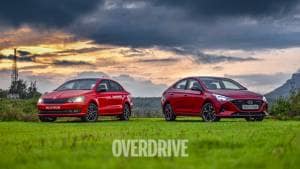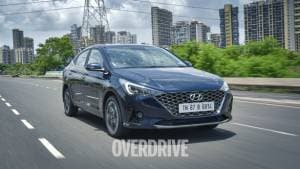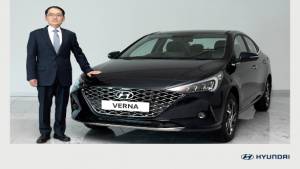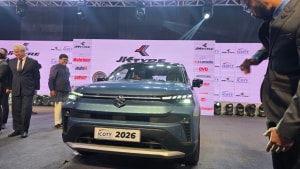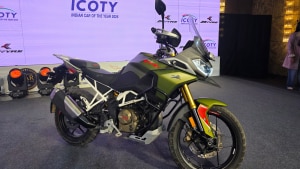2020 Hyundai Verna Turbo 1.0 DCT road test review
The quite gloomy situation around us notwithstanding, the last few weeks have been an interesting time to be a car lover in India. Our insatiable appetite for SUVs has made us think that sedans like this aren't great business sense anymore, both for the ones doing the buying and the ones doing the selling. But Hyundai is one of a flurry of carmakers who have decided to double-down on this segment, especially with cars like this Hyundai Verna Turbo, one that is being pitched towards the enthusiast driver.
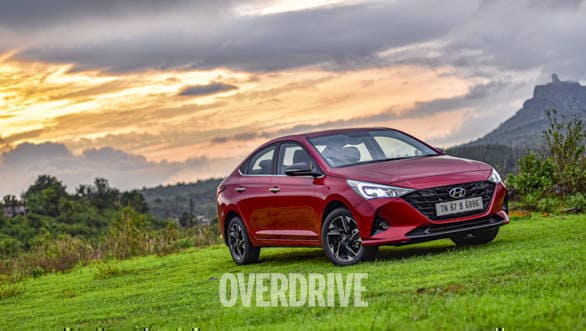
What's new?
As is fairly evident in these photos, the Hyundai Verna has received quite a significant styling update for this facelift. It's more convincing as mid-life updates go in this segment. The dominating element is the new wide full-face grille, another iteration of a design theme now common on most new Hyundais. This is flanked by much crisper full-LED headlamps and the new bumpers with their triangular inserts for the LED fog lamps. All of these bits exude just the right amount of intent. The gloss black treatment to the grille, mirrors and roof, its cross-hatched drille pattern and the small lip below are unique to the Turbo. These manage to visually engage a touch more than the other versions of the facelifted Verna. The new dual-tone alloy wheels, though not unique to the Turbo, are another sharp touch.
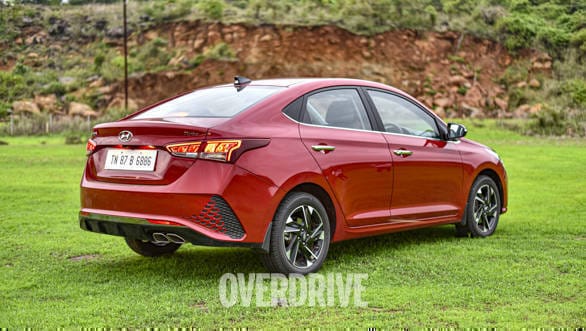
This effect is mildly diluted at the rear. The LED tail lamps have new detailing and there is a sharper bumper as well with an ornamental diffuser. Like with the Creta, the Verna Turbo also gets a dual-tipped exhaust. Although, we aren't entirely sure of the diminishing honeycomb element on the further ends of the rear bumper. A simpler design element here may have been more cohesive. We'd suggest you choose your Verna Turbo with a lighter shade like on this car for added effect from the new bits.
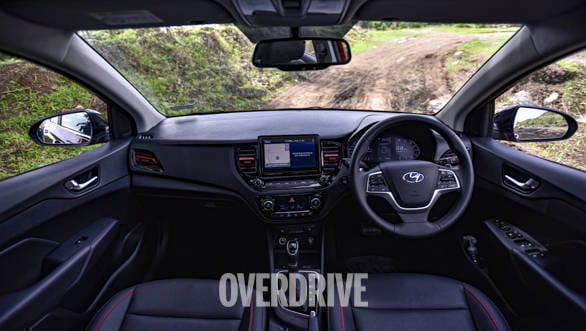
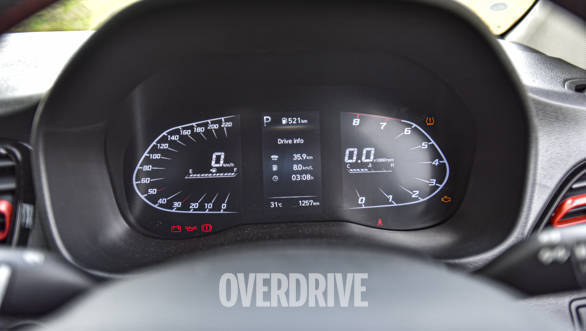
The Verna was always at the top of its class when it came to how it felt on the inside, so Hyundai hasn't had to do much work here. The only new bits are the digital instrumentation and the latest Hyundai infotainment. The instrument cluster is not a fully digital screen but uses three separate LCD segments. The dials themselves aren't the most legible but there are digital readouts for the speed and rpm to cover that. As for the eight-inch infotainment, we've experienced it in the Venue, and it is similarly intuitive and seamless here. The Turbo version's interior specifically adds an all-black interior theme, replete with the red air-vent highlights and contrast stitching on the seats. The only drawback seems to be the lack of soft-touch materials, especially on the dash face.
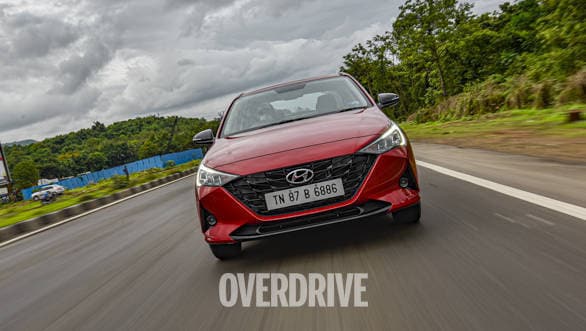
How is it on the move?
The Verna's seating position has always been well-liked by us, all the controls fall to hand easily and there is good visibility for drivers of all heights. This bodes well for this sportier version. Start up the motor, and the 1.0-litre Kappa T-GDi engine has slight vibrations, but these largely melt away as you set off. As you rev it out, the motor has a flat note throughout, you won't find a deep three-cylinder thrum here. But this does help for a quieter experience in less spirited driving.
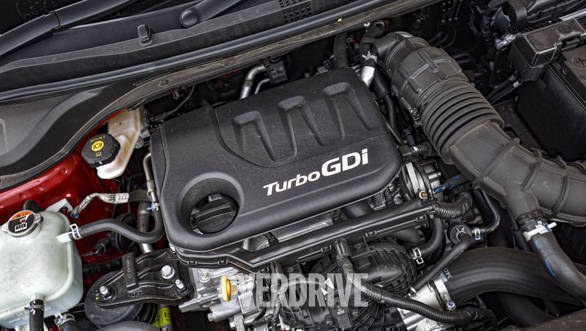
The motor makes 120PS at 6000rpm and 172 Nm at 1500 to 4000 rpm. This engine has fairly linear power delivery and reasonable throttle response. Power builds progressively and then stays steady right from around 2,500 rpm to the redline. Our in-gear numbers show that it is very easy to get a move on once the car is in the powerband. This means that whether you are overtaking slow-moving traffic around the city or sprinting up your favourite piece of tarmac, there is an engaging experience to be had. But we feel that the 1.4 T-GDI from the Creta could have dialled up the excitement quite a bit more, in comparison to the Verna's other engine options.
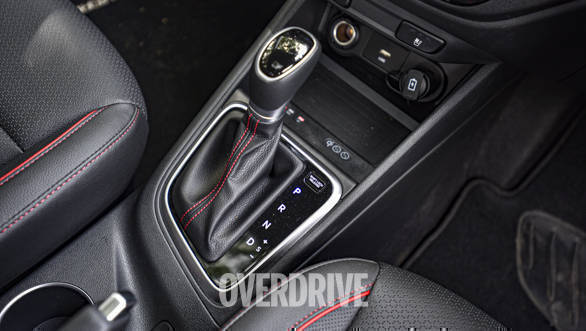
A lot of the motor's linearity is down to the seven-speed DCT that this comes paired with. Hyundai does a good job of pairing dual-clutch gearboxes to small-capacity engines and it is no different here. In the real-world, the gearbox works seamlessly for the most part. It does a very good job of keeping turbo-lag at bay, and upshifts are largely seamless. Discrepancies only crop up during downshifts, which are a bit more apparent. The gearbox also takes a smidge more time before it can choose the right gear to shift down to. But Hyundai has equipped the Verna Turbo with paddle shifters. This allows you to engage with the car a lot more and improves response times. Although, sometimes the gearbox will not give you a shift if it thinks you will fall out of the optimum driving range.
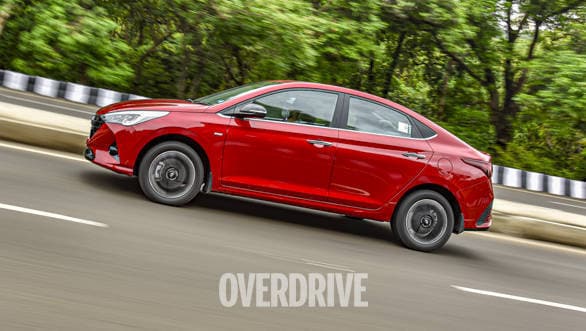
As for the dynamic package to go with this drivetrain, things look positive, though not exceptional. There is not much feel from the steering at low speeds, but its very light so manoeuvring through traffic is no issue. It weighs up the faster you go, but other cars in this segment also add more feedback. Show it a set of corners, and the Verna remains predictable as long as your inputs are measured. Dive in a bit too faster than it likes and the car will find it difficult to follow the line set by you. But this is not an alarming experience and is something that you can drive around once you've gotten used to the car.

Having said that, in most day-to-day driving, the Turbo is a great companion to long highway stints or pottering around the city all day. It remains steady and composed over flat road surfaces, but like in the pre-facelift car, there is stiffness that shows up over rough surfaces. The impact of some larger potholes and speed breakers are passed through into the cabin. The Hyundai is also very stable under braking and comes to a halt with authority, aside from a slightly sharp feel from the pedal. This is again something that you can get used to quite easily after spending some time with the car.
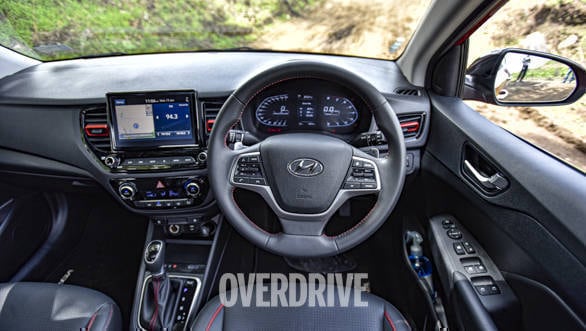
Is it good value?
The Verna's USP has always been its big interior space, extensive features list and competitive pricing. All of these things continue with this update. Hyundai has added many new features to the Verna. Aside from the ones already mentioned, there is Blue Link connected car technology, a hands-free boot release and wireless charging. This along with the already headline-grabbing ventilated seats and sunroof. The Verna also happens to be one of the safer cars on the road in this segment, with side and curtain airbags, front parking sensors and TPMS available on the Turbo.
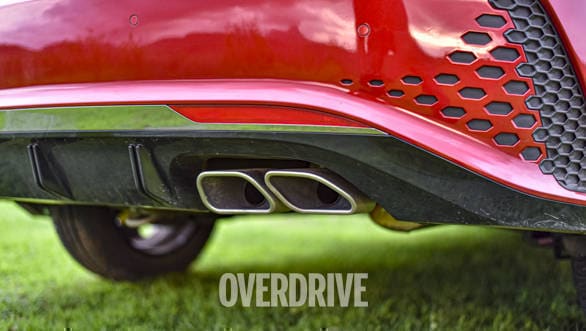
Chinks start to appear when you look at the Verna Turbo's packaging. The turbo-DCT drivetrain is available in a single top-spec SX(O) variant which costs Rs 13.99 lakh. This is slightly more than two lakhs less than the much larger Creta with the more powerful 1.4-litre motor. A manual version could have been a great fit for this engine option. Not just appealing to enthusiasts even more, but also improve the Turbo's value proposition. Having said that, Hyundai's many warranty packages and financial schemes bring with them a sense of security that may be worth the extra outlay.
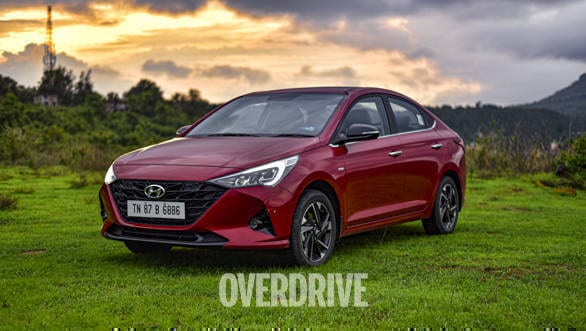
Should I buy one?
The Verna Turbo will be a top contender for anyone looking to buy a fast, comfortable family sedan. Sure, there are better driver's cars out there at this price-point, but the Verna is an exceptionally versatile product. With this Turbo version, there is just enough to cater to an enthusiast who also wants a comfortable daily driver with not too many compromises. Further, the facelifted model's vast powertrain options and variants list means that a Verna tailored to your needs and budget is not that far away. This update to the Verna has made it a nicer looking car and brought it up to speed with the latest tech on offer, which we think should be enough to keep it in contention with the new City that launches very soon.
The Numbers
Acceleration
0-40 kmph: 3.6s
0-60 kmph: 5.6s
0-80 kmph: 8.8s
0-100 kmph: 12.5s
Braking
100-0 kmph: 45.8m/3.1s
In- gear Acceleration
30-50 kmph: 2.2s (2.6s in manual 3rd)
50-70 kmph: 2.9s (3.4s in manual 4th)
60-80 kmph: 3.1s
Fuel Efficiency
City: 12.73 kmpl
Highway: 17.51 kmpl
Overall:
Spec comparo: 2020 Honda City vs 2020 Hyundai Verna vs Maruti Suzuki Ciaz vs Skoda Rapid
2020 Hyundai Verna facelift launched in India at a price of Rs 9.31 lakh
2020 Hyundai Verna launched in India: Variants explained
2020 Hyundai Verna: Things you may like and dislike
Watch our video review of the 2020 Hyundai Verna below:
Starts Rs 9.31 Lakhs
1493cc
Automatic
115
250
-NA-
Starts Rs 10.9 Lakhs
1497cc
Manual
100
145
17.8 Kmpl
Starts Rs 7.83 Lakhs
1498cc
Manual
90
225
26.82 Kmpl
Starts Rs 7.49 Lakhs
999cc
Automatic
110
175
18.97 Kmpl
